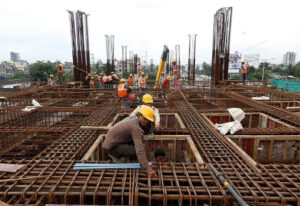Structural changes in the AMC Industry in India
3 min read
There are certain sectors, where Covid will prove to be an inflection point for the business – one of them would be the AMC business.
While the AMC business has been in India since 40 years, it really only broke out after 2003 thanks to supportive regulatory framework. In just 10 years – from 2003 to 2013, the Industry grew 10 times from Rs 1 trillion to Rs 10 trillion in Assets under management.
The Industry has since doubled in size to Rs 20 trillion in AUM. While Covid will act as a catalyst for more financial inclusion, there are many positive structural changes happening that point towards a robust long term growth story;
1. 95% of Indian house household wealth is in physical assets like Real estate , gold and consumer durables. This is not sustainable in the long term. As more and more Indians approach retirement in the next few decades, there would be a compulsive shift to financial assets like equities because of superior risk adjusted returns vis a vis physical assets which hardly beat the inflation.
2. The demography – Currently most of the MF inflows come from urban cities and from majorly from the working class population. With 226 million people set to join the workforce in the next few years and urban penetration set to rise from the current 37% to 50% over the next decade, the sector has huge natural tailwinds.
3. Under-penetration – India is the 7Th biggest economy in terms of nominal GDP and yet our asset management Industry is the 17th biggest in the world. This is because only roughly 2% of Indians are active investors in mutual funds.
The current AUM in India for the industry is roughly 11% of GDP which is way lower than the global average of 55%.
Thanks to financial literacy and huge participation from millennials, the next leg of growth is expected to be faster than ever.
The AMC business is a peculiar business. Historically it has been one of those industries where major economic downturns have actually accelerated the business.
Demonetisation actually has been perhaps the best thing that happened to this industry in this decade. Post demonetization, there has been a massive increase from physical to financial savings on a household level, leading to more inflows in the AMC business. We believe that going forward this how things may play out for the industry post covid;
• At present, 1 out of 5 total demat accounts present in the country have been opened in India are during the last 6 months. This amazing statistic reinforces our belief that a huge shift towards financial savings is imminent. Most of the incremental growth is coming in from Tier 2 and Tier 3 thus reinforcing the belief of the breadth of the industry.
• The next leg of growth is expected to take the industry size from 20 trillion to 100 trillion INR. Its widely believed that this next leg of growth will be achieved by mainly by technology platforms like digital wallets and robo advisory MF platforms which have been a big hit in Western countries.
• To play this theme in the stock markets, Its best to stick with top tier names and AMCs that hold a significant AUM in the Industry. Globally, its been seen that within a country, 10 AMCs hold 90% of the AUM and the big keep getting bigger.
By – Priyam



